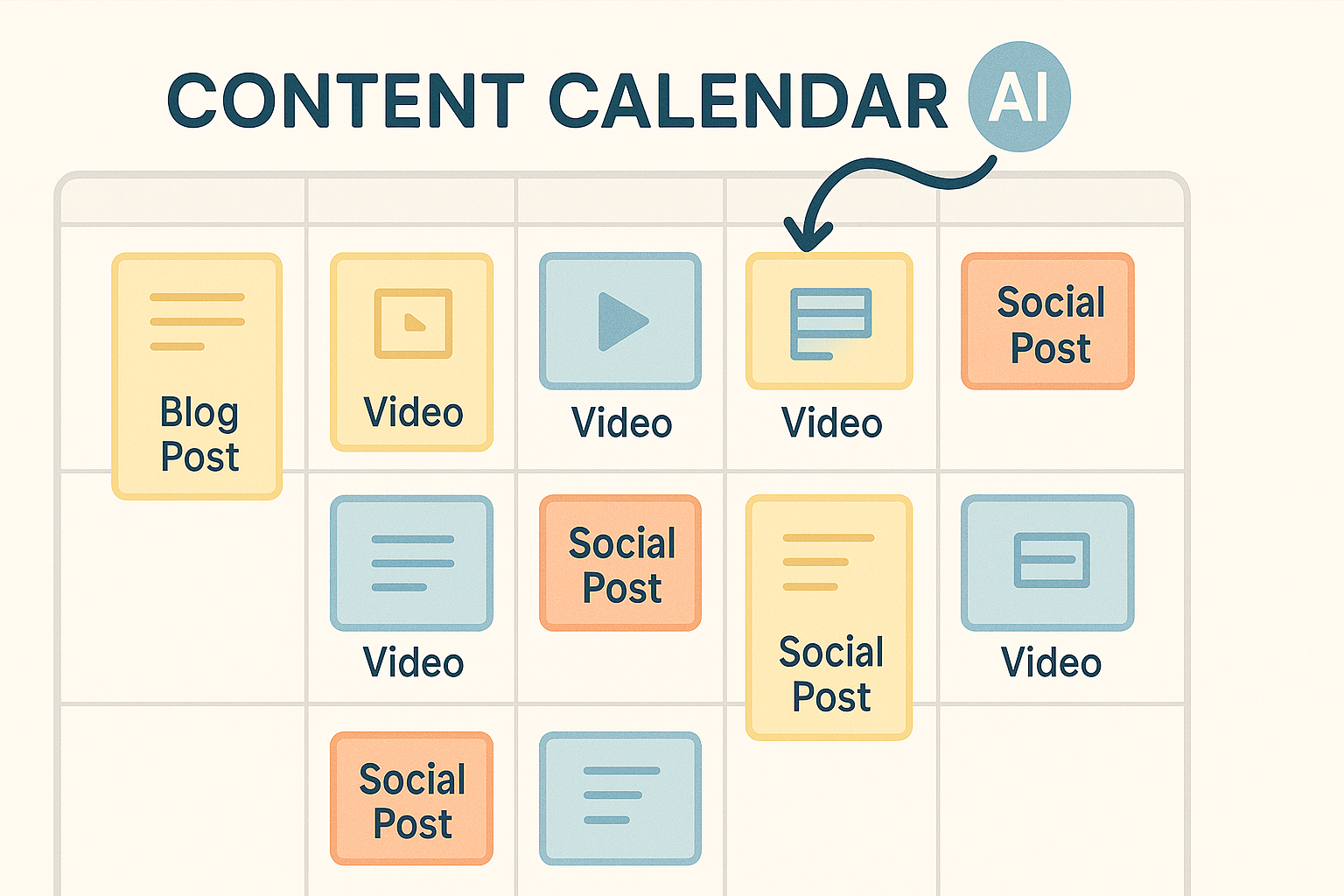Despite the fast evolution of AI, paid ads, and short-form video, content marketing remains one of the most reliable and scalable ways to build brand awareness and drive long-term traffic. In 2025, it’s not just about writing blog posts anymore—it’s about creating valuable content that connects with your audience across multiple platforms.
Content marketing works because it builds trust, demonstrates expertise, and creates evergreen assets. When done well, a single article, podcast, or infographic can continue generating traffic and leads for years.
Step 1: Define Your Content Goals
Before you create anything, you need to be clear on why you’re creating it. Are you aiming to:
✅Drive organic traffic? ✅Increase newsletter signups? ✅Support your sales funnel? ✅Build thought leadership?
Your goals will shape the type of content you produce, how you promote it, and how you measure success.

Step 2: Know Your Audience (and Speak Their Language)
Effective content marketing starts with deep audience understanding. In 2025, users expect hyper-relevant, helpful content. Use tools like Google Analytics, SparkToro, and AI-driven personas to understand your readers’ pain points, interests, and preferred platforms.
Then, tailor your content to meet their needs. Avoid jargon unless your audience expects it. Use natural language and structure your posts to solve problems clearly.
Step 3: Choose the Right Content Types
In 2025, your audience consumes content in more formats than ever before. A good strategy includes a mix of:
- Blog posts for SEO and authority
- Videos for reach and engagement
- Infographics for visual learners
- Podcasts for busy professionals
- Email series to nurture leads
The key is to reuse and repurpose. One blog post can become a LinkedIn carousel, a short video, and an email newsletter.
Step 4: Build a Consistent Publishing Workflow
A smart workflow saves time and keeps your team aligned. Use a content calendar and automate where you can. Social media scheduler platforms (like yours!) are essential for repurposing and publishing across channels.
AI tools can help generate ideas, write first drafts, or summarize blog posts into short-form content—but human editing is still critical to maintain brand voice and accuracy.

Step 5: Optimize for Search and Conversion
Every piece of content you publish should be optimized for both visibility and performance. That means:
- Targeting long-tail keywords with solid search intent
- Using internal linking to connect related content
- Writing clear meta descriptions with keywords
- Including calls-to-action that guide readers to the next step (like subscribing, downloading, or booking a demo)
Don’t forget to track results. Use UTM parameters and analytics to measure what’s driving actual business results—not just views.



